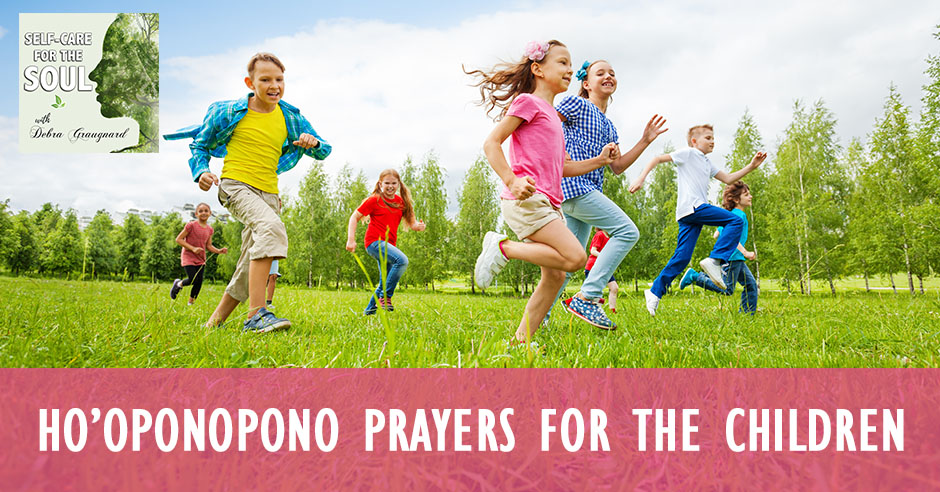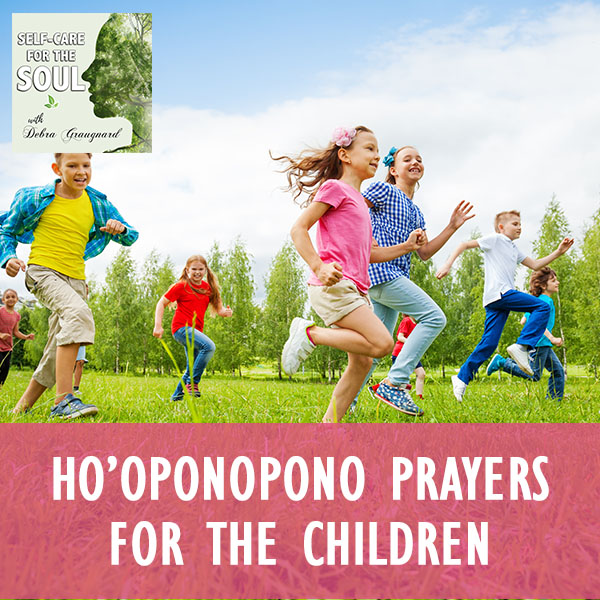In this article, we explore the fascinating concept of whether children are capable of learning and benefiting from the ancient Hawaiian practice called Ho’oponopono. Often associated with healing and reconciliation, this traditional method focuses on forgiveness and taking responsibility for one’s actions. By examining the potential impact of Ho’oponopono on children, we shed light on the transformative powers this practice might hold for our young ones.

Introduction
Ho’oponopono is a powerful Hawaiian healing practice that has gained popularity worldwide due to its ability to restore balance and harmony in relationships, emotions, and thoughts. While traditionally used by adults, Ho’oponopono can also be beneficial for children. By teaching children this ancient practice, we can equip them with valuable tools for emotional regulation, self-awareness, and creating positive connections with others. In this article, we will explore the history, principles, techniques, and benefits of Ho’oponopono for children. We will also discuss how children can learn and apply this practice, including case studies, challenges, and considerations. Additionally, we will explore the potential integration of Ho’oponopono into educational settings to promote overall well-being and a sense of belonging.
Understanding Ho’oponopono
History of Ho’oponopono
Ho’oponopono has its roots in ancient Hawaiian culture and has been practiced for centuries as a way to resolve conflicts, heal relationships, and restore balance within communities. The word “Ho’oponopono” can be translated as “to make right” or “to rectify an error.” Traditional Ho’oponopono practices were facilitated by a respected elder or spiritual leader and involved a gathering of family or community members. During these gatherings, participants would openly discuss and address their grievances, seeking resolution and forgiveness.
Basic principles of Ho’oponopono
At its core, Ho’oponopono is based on the belief that we are each responsible for our thoughts, actions, and the state of the world around us. It encourages taking ownership of our emotions and reactions, acknowledging our role in any conflicts or difficulties we encounter. The four basic principles of Ho’oponopono are:
-
I’m sorry – Taking responsibility for any negative emotions or actions.
-
Please forgive me – Asking for forgiveness from others affected by our behavior.
-
Thank you – Expressing gratitude for the opportunity to heal and grow.
-
I love you – Cultivating a sense of love and compassion for oneself and others.
By embracing these principles, individuals can release negativity, foster reconciliation, and restore harmony in relationships.
Ho’oponopono techniques and practices
Ho’oponopono offers various techniques and practices that can be adapted for children. These may include guided visualization, affirmation exercises, breathing exercises, journaling, and visualization of healing light. Additionally, children can learn simple yet powerful mantras such as “I’m sorry,” “Please forgive me,” “Thank you,” and “I love you.” These techniques aim to help children develop emotional intelligence, self-awareness, and a sense of responsibility for their actions and emotions.
Benefits of Ho’oponopono for Children
Emotional and mental well-being
One of the primary benefits of Ho’oponopono for children is the promotion of emotional and mental well-being. Through this practice, children learn to take a proactive approach to their emotions, acknowledging and addressing them in a healthy manner. Ho’oponopono can empower children to release negative emotions, such as anger, sadness, or fear, and cultivate a sense of peace and contentment within themselves.
Enhancing self-awareness and self-reflectiveness
Ho’oponopono encourages children to cultivate self-awareness and self-reflectiveness. By taking responsibility for their actions and emotions, children develop a deeper understanding of themselves and their impact on others. They learn to identify triggers, patterns, and behaviors that may contribute to conflicts or difficulties. This self-reflectiveness enables children to make conscious choices and take necessary steps towards personal growth and positive change.
Developing empathy and compassion
Ho’oponopono also plays a crucial role in nurturing empathy and compassion in children. Through the practice of Ho’oponopono, children are reminded of the interconnectedness of all beings and the importance of treating others with kindness and understanding. By understanding the impact of their actions on others, children develop empathy, leading to more harmonious and compassionate relationships.
Improving communication and relationship skills
Communication and relationship skills are vital for children’s social and emotional development. By teaching Ho’oponopono to children, we provide them with a framework for effective communication and conflict resolution. Through open and honest discussions, children can express their feelings, listen to others’ perspectives, and work towards finding mutual understanding and resolution. These skills are invaluable in building healthy and positive relationships throughout their lives.
Cultivating forgiveness and letting go
Forgiveness is an essential aspect of Ho’oponopono, and it holds great significance for children as well. By learning the power of forgiveness, children can release grudges, resentments, and negative attachments. This allows them to let go of emotional burdens and create space for healing and growth. Forgiveness also helps children cultivate resilience and build the capacity to move forward with grace and compassion.
Strengthening spiritual connection
Ho’oponopono is not limited to its psychological and emotional benefits; it also offers a means of strengthening children’s spiritual connection. Through this practice, children can develop a sense of spirituality, regardless of their religious beliefs. Ho’oponopono teaches children to connect with their inner selves, acknowledge their divine nature, and cultivate a deeper connection with the world around them. This connection fosters a sense of purpose, meaning, and overall spiritual well-being.
How Children Can Learn Ho’oponopono
Age-appropriate teaching methods
When introducing Ho’oponopono to children, it is essential to consider age-appropriate teaching methods. Younger children may benefit from storytelling, puppetry, or art-based activities that illustrate the principles of Ho’oponopono in a relatable and engaging manner. Older children can engage in more in-depth discussions, journaling, and role-playing exercises to explore the concepts of personal responsibility, forgiveness, and emotional regulation.
Incorporating play and creativity
Play and creativity are integral parts of children’s learning and development. Incorporating play and creativity into Ho’oponopono teachings can enhance children’s engagement and understanding of the practice. Games, role plays, and creative activities such as drawing or writing letters can foster a sense of enjoyment and exploration while reinforcing the principles and techniques of Ho’oponopono.
Simplified Ho’oponopono processes
To accommodate children’s cognitive abilities, Ho’oponopono processes can be simplified and adapted. Short mantras, affirmations, or breathing exercises can be introduced to children to help them incorporate Ho’oponopono into their daily lives easily. By breaking down the practice into simple steps, children can gradually integrate Ho’oponopono as a natural part of their emotional well-being routine.
Parental and teacher involvement
Parents and educators play a significant role in teaching children Ho’oponopono. By modeling the principles and techniques themselves, adults can guide children in understanding and applying this practice. Parents can create opportunities for family discussions, implement Ho’oponopono techniques during conflicts, and support children in their Ho’oponopono practice. Similarly, teachers can incorporate the principles of Ho’oponopono into classroom discussions and offer resources and guidance for students to deepen their understanding of this practice.
Creating a safe and supportive environment
Children thrive in environments where they feel safe, supported, and accepted. In teaching Ho’oponopono to children, it is crucial to create such an environment. Children should feel comfortable expressing their emotions, thoughts, and experiences without fear of judgment or punishment. By establishing this safe and supportive environment, children can freely explore Ho’oponopono and its benefits, fostering their emotional and social growth.

Case Studies on Ho’oponopono with Children
Successful applications of Ho’oponopono with children
Numerous case studies have demonstrated the positive impact of Ho’oponopono on children’s well-being. In one study, children who regularly practiced Ho’oponopono showed significant improvements in emotional regulation, anger management, and overall happiness. Another case study focused on children with behavioral challenges and found that Ho’oponopono interventions led to enhanced self-control, reduced conflicts, and improved social skills.
Real-life examples of positive outcomes
In real-life settings, Ho’oponopono has brought about transformative changes for children. Schools that have incorporated Ho’oponopono practices have reported improved behavior, increased empathy, and enhanced overall well-being among students. Teachers have witnessed students resolving conflicts independently, expressing empathy towards their peers, and fostering a positive classroom atmosphere.
Testimonials from parents and educators
Parents and educators who have introduced Ho’oponopono to children have shared heartfelt testimonials about its effectiveness. They have noticed positive shifts in their children’s behavior, improved communication skills, and greater emotional resilience. Parents have reported reduced sibling rivalry, increased empathy towards others, and a sense of inner calmness and contentment in their children. Educators have observed improved conflict resolution skills, increased self-awareness, and elevated classroom dynamics.
Challenges and Considerations
Cultural sensitivity and respect
Ho’oponopono is deeply rooted in Hawaiian culture and traditions, and it is essential to approach the practice with cultural sensitivity and respect. When teaching Ho’oponopono to children outside of the Hawaiian culture, it is crucial to educate them about its origins and cultural significance. Emphasizing the importance of honoring and respecting the practice’s roots fosters awareness and appreciation for the Hawaiian culture while ensuring the integrity of the practice.
Adapting Ho’oponopono for different contexts
Ho’oponopono may need to be adapted to different contexts to be more inclusive and relatable for children from diverse backgrounds. This adaptation can involve incorporating universal values and principles that align with individual cultural backgrounds. By recognizing the common themes of responsibility, forgiveness, and compassion, children from various cultures can benefit from the practice while still honoring their unique traditions and beliefs.
Individual differences and diverse needs
Children have diverse needs and individual differences that should be considered when teaching Ho’oponopono. Some children may require additional support or personalized adaptations to fully engage with the practice. Teachers and parents should be attentive to each child’s unique learning style, emotional development, and any specific needs they may have. By tailoring the approach, Ho’oponopono can become an inclusive practice that addresses the individual needs of each child.
Ethical considerations
Introducing Ho’oponopono to children also raises important ethical considerations. It is crucial to ensure that children understand and actively consent to participate in the practice. Additionally, the use of Ho’oponopono should always be focused on healing, empowerment, and personal growth, rather than a means of manipulation or coercion. Maintaining ethical guidelines and seeking informed consent from children and their families ensures the responsible and respectful application of Ho’oponopono.

Integration of Ho’oponopono into Education
Potential benefits of incorporating Ho’oponopono in educational settings
Integrating Ho’oponopono into educational settings can offer numerous benefits for students, teachers, and the overall school environment. Students who practice Ho’oponopono may exhibit improved self-regulation, greater empathy towards others, enhanced conflict resolution skills, and better overall well-being. Teachers may experience increased job satisfaction, improved classroom dynamics, and reduced conflicts among students. In turn, the school environment becomes more harmonious, inclusive, and conducive to learning and personal growth.
Training and resources for teachers
To effectively integrate Ho’oponopono into education, teachers may benefit from specialized training and access to relevant resources. Professional development opportunities can equip educators with the necessary knowledge and skills to teach Ho’oponopono effectively. Training programs could include modules on cultural sensitivity, age-appropriate teaching methods, adapting Ho’oponopono for diverse classrooms, and strategies for creating a supportive learning environment.
Collaboration between schools and Ho’oponopono practitioners
Collaboration between schools and Ho’oponopono practitioners can be highly beneficial for implementing the practice in educational settings. Ho’oponopono practitioners can provide guidance, support, and expert knowledge to educators, ensuring the practice is implemented in a culturally respectful and effective manner. This collaboration can include workshops, guest speaking engagements, and ongoing support to schools interested in integrating Ho’oponopono into their curriculum and daily routines.
Conclusion
Ho’oponopono has the potential to empower children by providing them with valuable tools for emotional regulation, self-awareness, and creating positive connections with others. By embracing the principles and techniques of Ho’oponopono, children can benefit from enhanced emotional and mental well-being, improved communication and relationship skills, and a strengthened spiritual connection. Through age-appropriate teaching methods, playfulness, and parental or teacher involvement, children can learn and apply Ho’oponopono in their daily lives. Integration of Ho’oponopono into educational settings can further amplify its benefits, creating a nurturing environment for children’s overall growth and well-being. By doing so, we equip children with valuable life skills that can positively impact their relationships, personal development, and future success.

